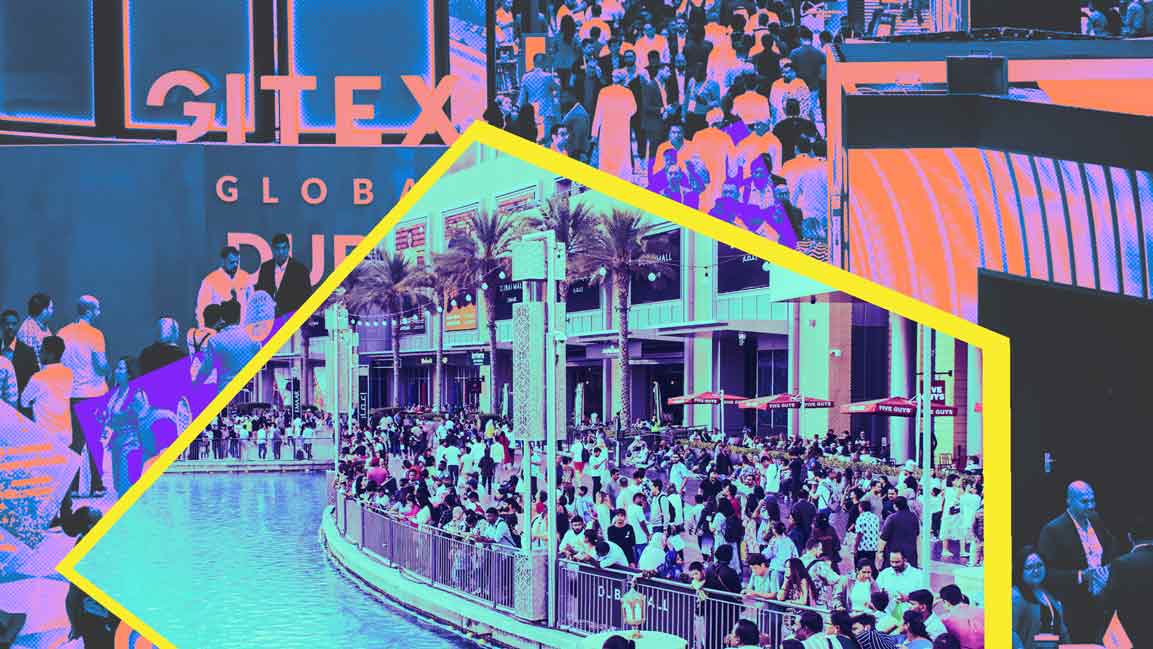- | 9:00 am
What happens when brands fall short on their promises? The risks of ethical branding
Young consumers are seeking brands that deliver on sustainability, inclusivity, and cultural sensitivity while maintaining high product quality.

As the target audience for brands gets younger, the marketing strategies continue to evolve, as ethical branding continues to take center stage for every big and small business. Things like sustainability, local sourcing, inclusivity and diversity have become pillars in branding strategies in order to build a loyal customer base.
According to the Braze Customer Engagement Review (CER), 97% of marketers report difficulties in building emotional connections with consumers, particularly when it comes to crafting resonant messaging.
To overcome this challenge, many are turning to tactics such as incorporating humour, pop culture, and social causes (41%), using AI to tailor tone for individual recipients (41%), and delivering personalised messages based on customer behavior and channel preferences (30%).
From global giants like Nike, Aramco, and Al Futtaim to local names such as The Giving Movement and Earthly, ethical branding is taking center stage, so much so that it begs the question: Is brand image beginning to outweigh product quality in importance?
THE ROLE OF ETHICAL BRANDING
Camilla d’Abo, Executive Vice President, Comms and Content, BPG UAE, says ethics and political correctness have evolved from a checklist to a core component of how brands are evaluated. “In the Middle East, companies are expected to navigate religious values, cultural sensitivities, and heightened scrutiny from a more informed and vocal public.”
She attributes one of the earliest global benchmarks for socially conscious campaigns to Dove’s Real Beauty campaign, which challenged outdated beauty standards and featured real women of different ages, body types, and ethnicities.
“It proved that ethical storytelling, when done right, drives both relevance and revenue. As a result of the campaign, Dove’s global sales jumped from $2.5 billion to $4 billion over ten years. It remains one of the strongest case studies in values-driven marketing.”
She points to local campaigns from brands like Nissan, with its “SheDrives” campaign, and Coca-Cola’s Ramadan cans campaign, as examples that demonstrate how relevance matters.
Global and regional statistics, such as the 2025 DHL Online Shopping Trends Report, show that 42% of online shoppers in the UAE abandon purchases when sustainable shipping options are not available.
“This means that ethical alignment has a direct impact on revenue and purchase habits. Ultimately, brand credibility now rests on substance. Words, products, and corporate governance must all align.”
Samar Humaid, Social Media and Digital Marketing Expert at Elite Group Holding, says that in her industry, ethics and political correctness have become central to automotive branding. “It’s pushing companies to embed sustainability, inclusivity, and social responsibility into both product development and marketing,” she explains.
Priyanka Jaswani, Portfolio Marketing Manager at GBM, says ethical branding which was once considered a “nice to have” is now a prerequisite for relevance and resilience in today’s marketplace.
“Consumers, especially Gen Z and Millennials, are increasingly value driven, they notice not just what a brand sells, but what it stands for.”
This cultural shift has pushed brands to be more inclusive, transparent, and socially conscious in both messaging and action. “In product development, this translates to more thoughtful sourcing, sustainability integration, and accessibility considerations.”
From a marketing lens, the bar has risen on cultural sensitivity and representation—not just in casting, but in narrative and nuance.
“Performative messaging without structural backing is easily detected and publicly called out, especially in the age of UGC being at the core of most D2C brands.”
RISKS OF IMBALANCE
While ethical branding can cultivate a loyal customer base, many brands see this strategy’s effectiveness and take it too far, solely relying on promoting their brand through social consciousness.
“When ethical branding becomes the sole focal point at the expense of actual product performance, it can quickly backfire,” Jaswani says.
She notes that while consumers might appreciate a brand’s mission, they are mainly buying for utility, experience, and value.
“If the product doesn’t deliver, the ethical messaging begins to feel like a façade—a distraction tactic rather than a genuine commitment. Worse, it erodes trust,” Jaswani states, explaining that the most powerful brands are the ones that balance between a product’s quality and the values that reinforce it.
“There’s also a reputational risk: ethical positioning invites scrutiny. If internal practices or supplier relationships contradict the brand’s stated values, it can lead to public backlash and long-term damage.”
d’Abo says over-reliance on ethical branding risks message feeling performative. When a brand leans too heavily on values without delivering on the fundamentals, audiences begin to question whether the ethics are genuine or merely for show, especially in markets like the UAE and Saudi Arabia, where innovation and service are now baseline expectations, and consumers are quick to spot contradictions.
“We’ve seen how public sentiment can turn quickly when there’s a gap between what a brand claims and how it behaves. The recent wave of boycotts across the region shows how ethics are often the first thing challenged when trust breaks down,” she adds.
CONSUMER BACKLASH
Companies that overly rely on socially conscious branding risk facing stronger consumer backlash than their competitors. As the MENA region’s customer base becomes more aware of social and environmental issues, they hold brands that claim to uphold these values to a much higher standard.
In recent years, the MENA region has seen its own wave of consumer boycotts in solidarity with the Palestinian cause, with brands like Zara, Starbucks, and Pepsi coming under fire, while consumers increasingly turn to local alternatives.
Humaid notes that consumers quickly spot and call out gaps between ethical claims and actual vehicle performance. “This leads to skepticism, negative reviews, and brand switching, ultimately harming reputation and sales.”
Jaswani says consumers today are empowered with information and platforms. When they sense a disconnect between ethical claims and real-world performance, whether in product quality or corporate behavior, they don’t just walk away; they speak out.
“Social media has made it easy for individuals to mobilize collective sentiment. One negative thread or review can spiral into a broader conversation about brand integrity.”
She adds that it’s not just outrage, it’s disappointment. “Consumers want to believe in the brands they support. When that belief is betrayed, it feels personal.”
“That’s why transparency and humility are essential. Brands that acknowledge missteps and demonstrate a genuine willingness to correct course can recover. Those that deny or deflect often don’t.”
d’Abo notes that in the region, backlash is not just limited to consumer boycotts and social media posts but can also lead to the involvement of regulatory bodies.
She notes that in the UAE, platforms like the Ministry of Economy’s Consumer Protection Department and the Dubai Consumer app make it easy to report concerns, with formal complaints often filed over misleading or inappropriate conduct. In Saudi Arabia, regulators show similar vigilance, with a Q4 2024 report from the Ministry of Commerce logging tens of thousands of inspections and complaints, many linked to questionable ethical marketing.
Culturally, the UAE has recently implemented regulations restricting non-Emiratis from wearing national dress or using the Emirati dialect in media and advertising, signaling a broader message to brands about the importance of cultural authenticity and respect.
“Organizations now face pressure not only from consumers but also from regulators when their ethical positioning touches on national heritage,” d’Abo states. “In this region, when brands misstep, audiences respond loudly and through official channels. That makes it harder for any brand to hide behind claims it can’t back up.”
FUTURE EXPECTATIONS
Jiswani says the future will see brands accelerating the integration of ethics into every stage of the customer journey, from product ideation to post-purchase support.
“Issues like carbon neutrality, gender pay equity, fair wages, data protection, and cultural representation will be non-negotiables. It will also be imperative to effectively communicate these aspects in brand messaging.”
As customer literacy evolves and audiences become more discerning and less tolerant of vague promises or unverified claims, the brands that thrive will be those that view ethics and quality not as trade-offs, but as complementary drivers of growth.
Similarly, d’Abo says expectations will grow sharper and more complex.
In the Middle East, younger consumers are leading this shift. She points to the 2025 KPMG Customer Experience Excellence report, which found that 67% of UAE consumers aged 18 to 24 are willing to pay a premium for ethically sourced products, while 60% are prepared to spend more for personalized experiences.
“Technology, especially AI, adds another layer of expectation. Consumers will expect clear answers on whether AI is being used responsibly and whether it serves efficiency and personalization, or crosses the line into manipulation or bias.”
“Communications has long been the brand’s conscience, aligning the message with reality. As expectations become increasingly complex, communicators will have to shape brands’ reputation before it’s tested, because there’s no salvaging it after the fact.”






































